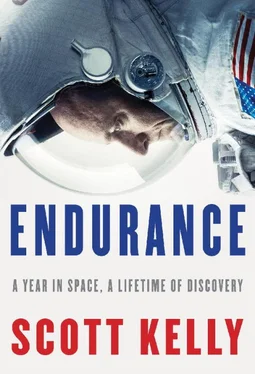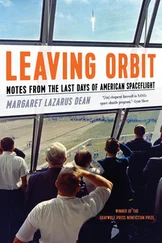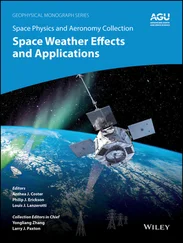Before Samantha left Earth, she took Terry to her hair salon in Houston so her stylist could teach him to replicate her sleek asymmetrical haircut in space. Haircuts are one of the many tasks ISS crew members have to perform for one another (in addition to giving simple medical tests, drawing blood, doing ultrasounds, and even performing basic dentistry). Terry and Samantha posted pictures of the hairstyling lesson on Twitter, and their followers seemed tickled by the idea that Terry, the upcoming commander of the International Space Station, was being trained as a temporary cosmetologist. Halfway through their mission together, the big day came: Samantha felt her hair was getting too long and asked Terry to get out the equipment. Because we can’t leave bits of hair floating in the air for others to inhale, our haircut equipment includes a vacuum cleaner. Terry tried his very best, but he still screwed it up—the layers that Samantha’s stylist had made seem so easy to replicate under Earth’s gravity were now floating all over the place. Samantha has spent the rest of her mission with her thick, dark hair sticking out from her head in a perfect brush that reminds me of a Russian fur hat.
The capcom speaking to us on the ground today is David Saint-Jacques, a Canadian astronaut. The term “capcom” is left over from the early days of Mercury when the astronauts went to space in capsules—one person in mission control was designated the “capsule communicator,” the sole person in voice contact with the astronaut in space. “Capsule communicator” was shortened to “capcom,” and the name stuck. Today David is talking us through the capture process, announcing Dragon’s position as it moves, controlled by the ground through each of its preplanned stops.
“Station, Houston, on Space to Ground Two. Dragon is inside the two-hundred-meter keep-out sphere.”
The keep-out sphere is an imaginary radius boundary around the station, meant to protect us from accidental collisions. “The crew now has the authority to issue an abort.” This means that we can stop the process ourselves if we lose contact with Houston or if Dragon is outside the corridor. As Dragon approaches station, the early morning light catches the jagged edges of the Himalayas below. The Earth seems to zip by at an impossible speed.
“Houston on Two for rendezvous,” Terry says. “Houston, capture conditions are confirmed. We’re ready for Dragon capture. We’re ready for step four.”
“Copy that, stand by for capture, and just for your situational awareness, we expect that to take us about five or six minutes.” Teams on the ground will give us one final go/no go for capture.
When the Dragon is within ten meters, we inhibit the station’s thrusters to prevent any unintended jolts. Samantha takes control of the robotic arm, using her left hand to control the arm’s translation (in, out, up, down, left, right) and her right hand to control its rotation (pitch, roll, and yaw).
“Station on Two for rendezvous,” we hear from mission control. “You are go for capture sequence.”
“Station copies,” Samantha answers.
Samantha reaches out with the robot arm, watching a monitor that offers a view from a camera on the “hand,” or end effector, as well as two other video monitors showing data describing Dragon’s position and speed. She can also look out the big Cupola windows to see what she’s doing. She moves the arm out away from the station—very slowly and deliberately. Closing the space between the two spacecraft inch by inch, Samantha never wavers or goes off course. On the center screen, the grapple fixture on Dragon grows larger and larger. She makes very precise adjustments to keep the spacecraft and the robot arm perfectly lined up.
The arm creeps out slowly, slowly. It’s almost touching the Dragon.
Samantha pulls the trigger. “Capture,” she says.
Perfect.
“We have nominal capture confirmed at 5:55 a.m. Central Time, while the station and Dragon fly over the northern Pacific Ocean, just to the east of Japan.”
Samantha’s round face has been a study of concentration, her bright brown eyes seeming almost not to blink. The moment capture is confirmed, her face relaxes into a huge smile and she high-fives Terry and me.
Terry speaks: “Houston, capture is complete. Samantha did a perfect job grappling Dragon.”
“Copy and concur. Great job, guys. Congratulations.”
Samantha takes the mic. “I just wanted to say thank you to the folks at SpaceX and you guys in Houston. It’s been just amazing, watching the launch and knowing that it was headed our way and sure enough came knocking on our door. It was steady as a rock and we’re very happy to have it here. It’s exciting to have a new SpaceX dock. There’s lots of science, and even coffee is in there. That’s pretty exciting. So again, thanks a lot and great job to everybody.”
“Thank you, Sam, and thank you, Terry, there’s a bunch of very grateful people on the ground to see this go as smoothly as it has today. Nice job.”
Now control is passing to the robotics officer in Houston (we call him “Robo”), who will maneuver Dragon into a position to be attached to the berthing port on the Earth-facing side of Node 2. Robo is controlling the robotic arm by typing in angles for the joints—they are analyzed by software to ensure the trajectory is safe before they are implemented. Once Dragon is lined up correctly, I will get involved again, monitoring when Dragon comes close enough to the station for “soft” berthing—four nine-inch latches reach out and grab Dragon and pull it into final contact with the ISS—followed by “hard” berthing, sixteen bolts driven through the connection between the space station and the Dragon to securely mate the two spacecraft.
The process of pressurizing the space between the Dragon and the station (the “vestibule”) takes several hours and is important to do correctly. The danger Dragon poses to the station is not over: a mistake in this procedure could cause depressurization. So Samantha and I work through the steps one by one, making sure to do it right. First we check the integrity of the seal between the station and the Dragon by introducing air into the opening between them, a bit at a time. As when we arrived in the Soyuz, if the air pressure inside the vestibule were to decrease, even a tiny bit, that would indicate that the seal has been compromised and that opening the hatch would mean venting our breathable air out into the cosmos.
After a number of iterations of this process—introduce air, wait, measure pressure; repeat—we declare the seal safe, but we will wait until tomorrow to open the hatch. That step requires its own sequence of exacting steps. I’ve seen crews push themselves to get through the entire process because they were so eager to get into their care packages and fresh food. The process takes hours, though, and especially after the morning we spent with capture, it doesn’t seem like a good idea to push things—there’s too much risk of making a mistake. It will take us the next five weeks to unload all the cargo.
—
WHEN I FLOAT into my CQ for a moment to check my email, it’s the first time I’ve had the chance to pause and think today. The carbon dioxide level is high today, nearly four millimeters of mercury. I can check it on the laptops and see exactly what the concentration of CO 2is in our air, but I don’t need to—I can feel it. I can sense the levels with a high degree of accuracy based only on the symptoms I’ve come to know so well: headaches, congestion, burning eyes, irritability. Perhaps the most dangerous symptom is impairment to cognitive function—we have to be able to perform tasks that require a high degree of concentration and attention to detail at a moment’s notice, and in an emergency, which can happen anytime, we need to be able to do those tasks right the first time. Losing just a fraction of our ability to focus, make calculations, or solve problems could cost us our lives. And we are still learning about the long-term effects of breathing so much CO 2. It may cause cardiovascular problems and other issues in the future that we don’t yet understand.
Читать дальше












